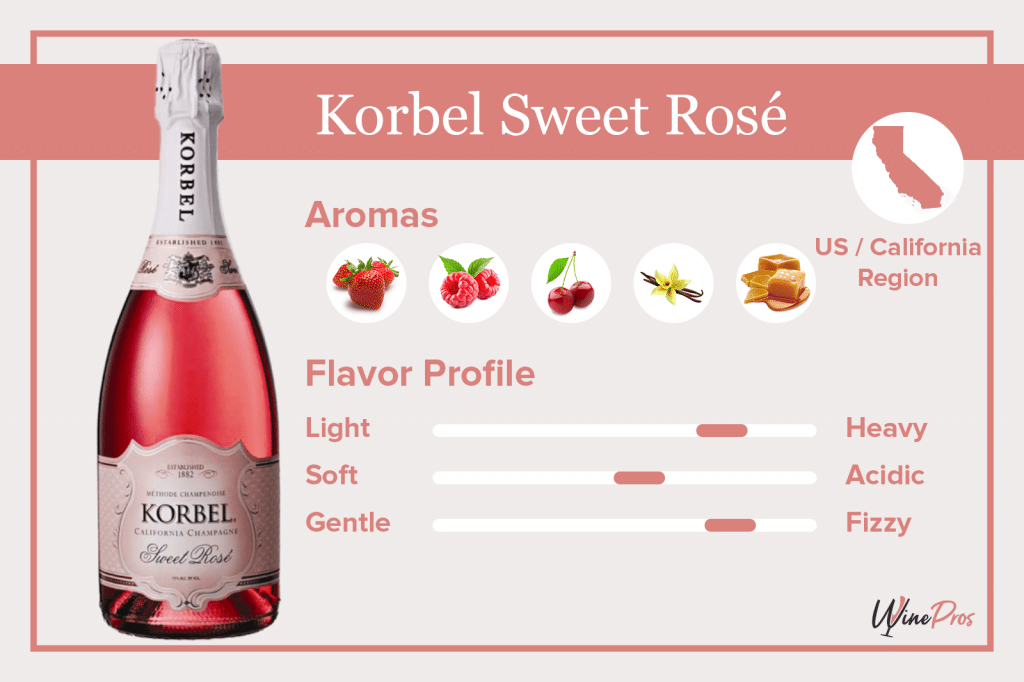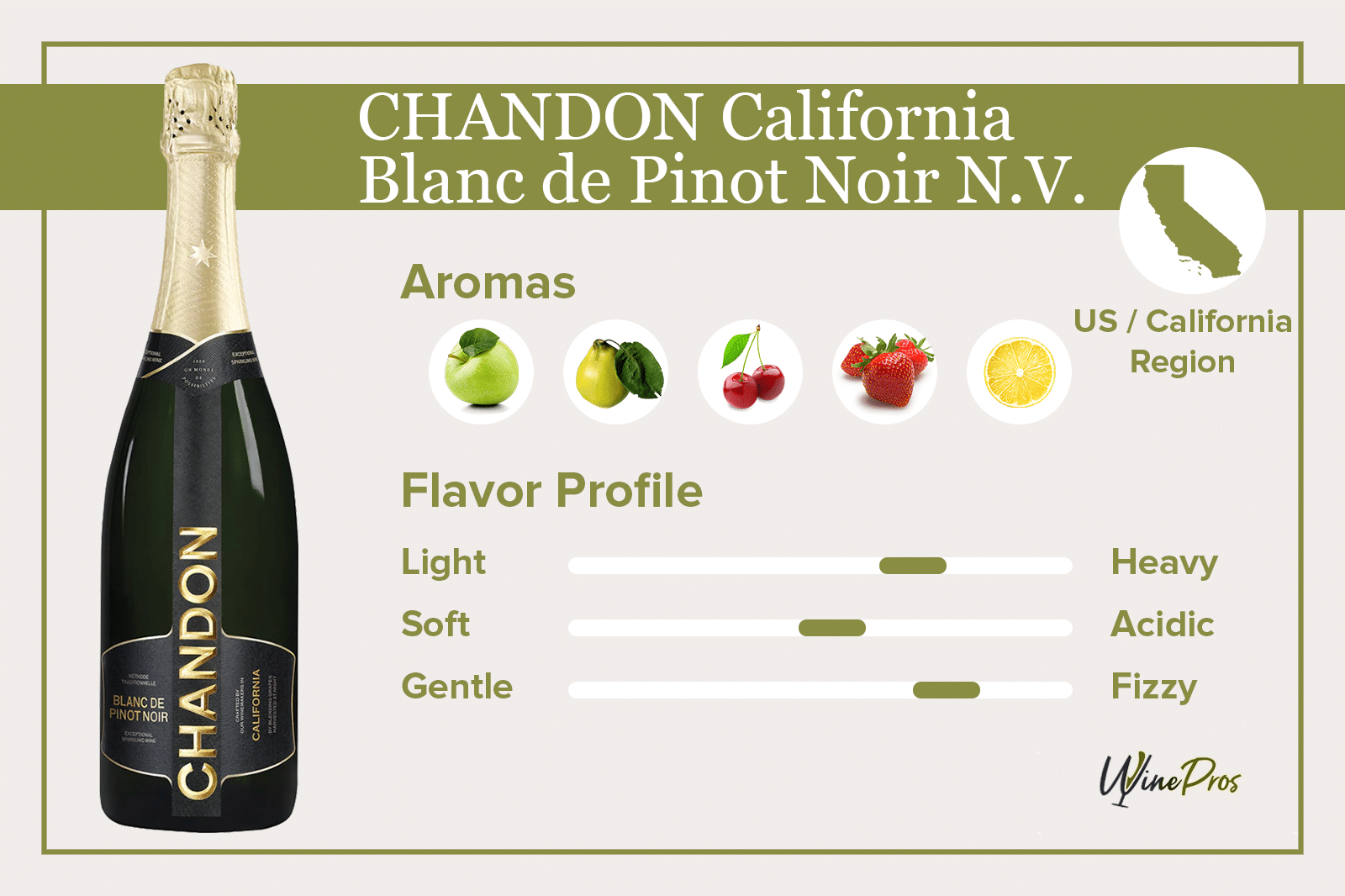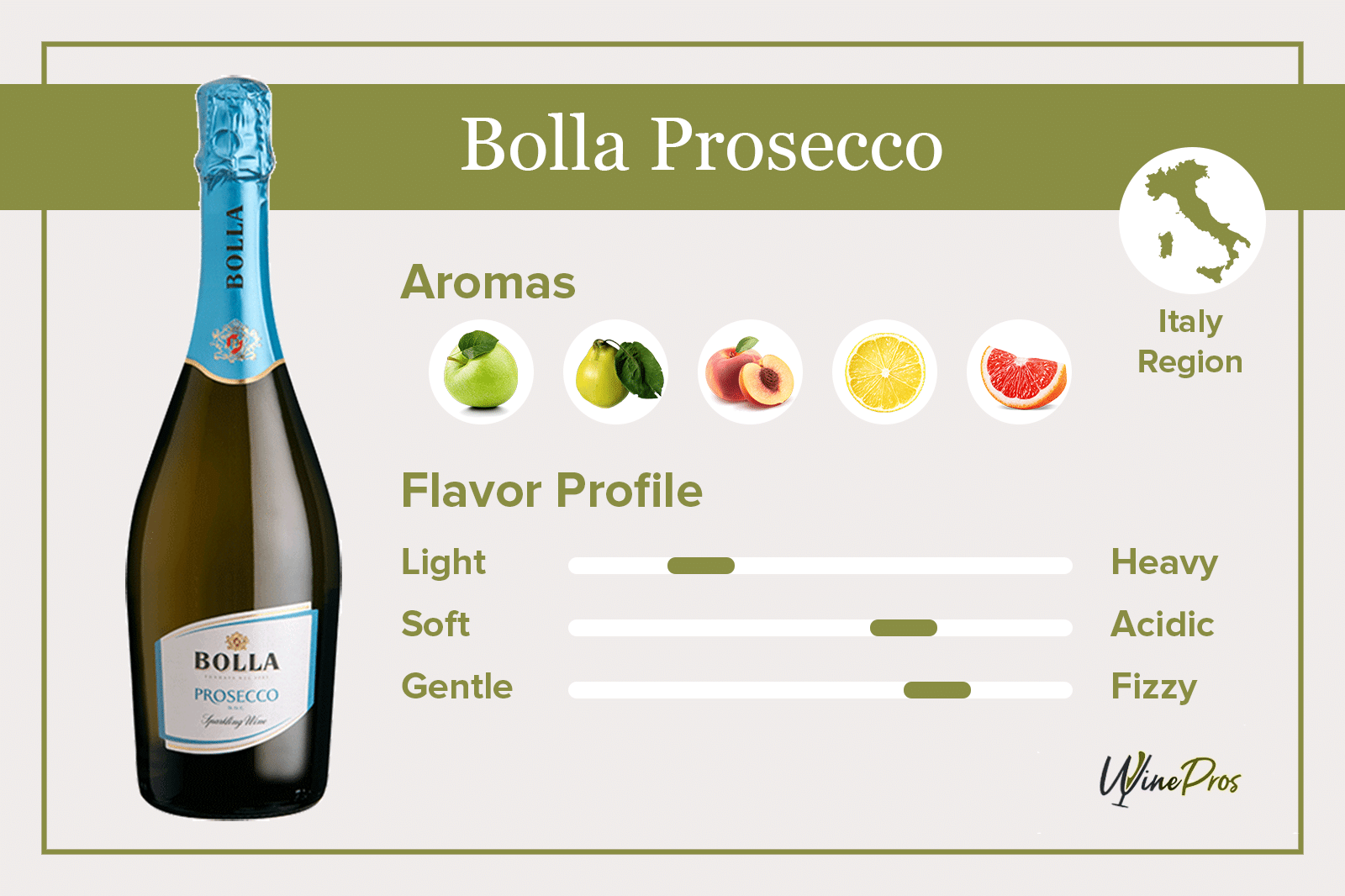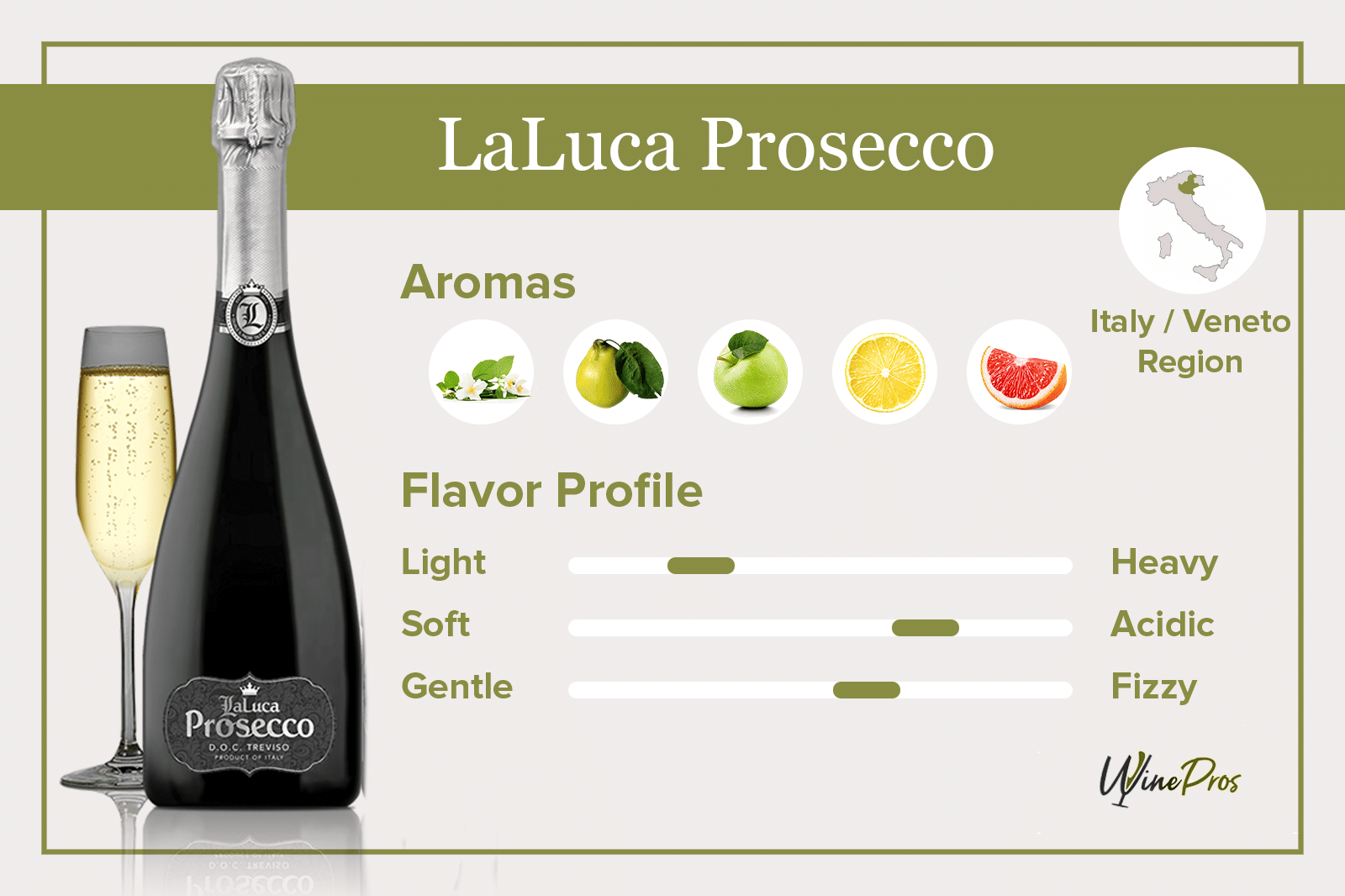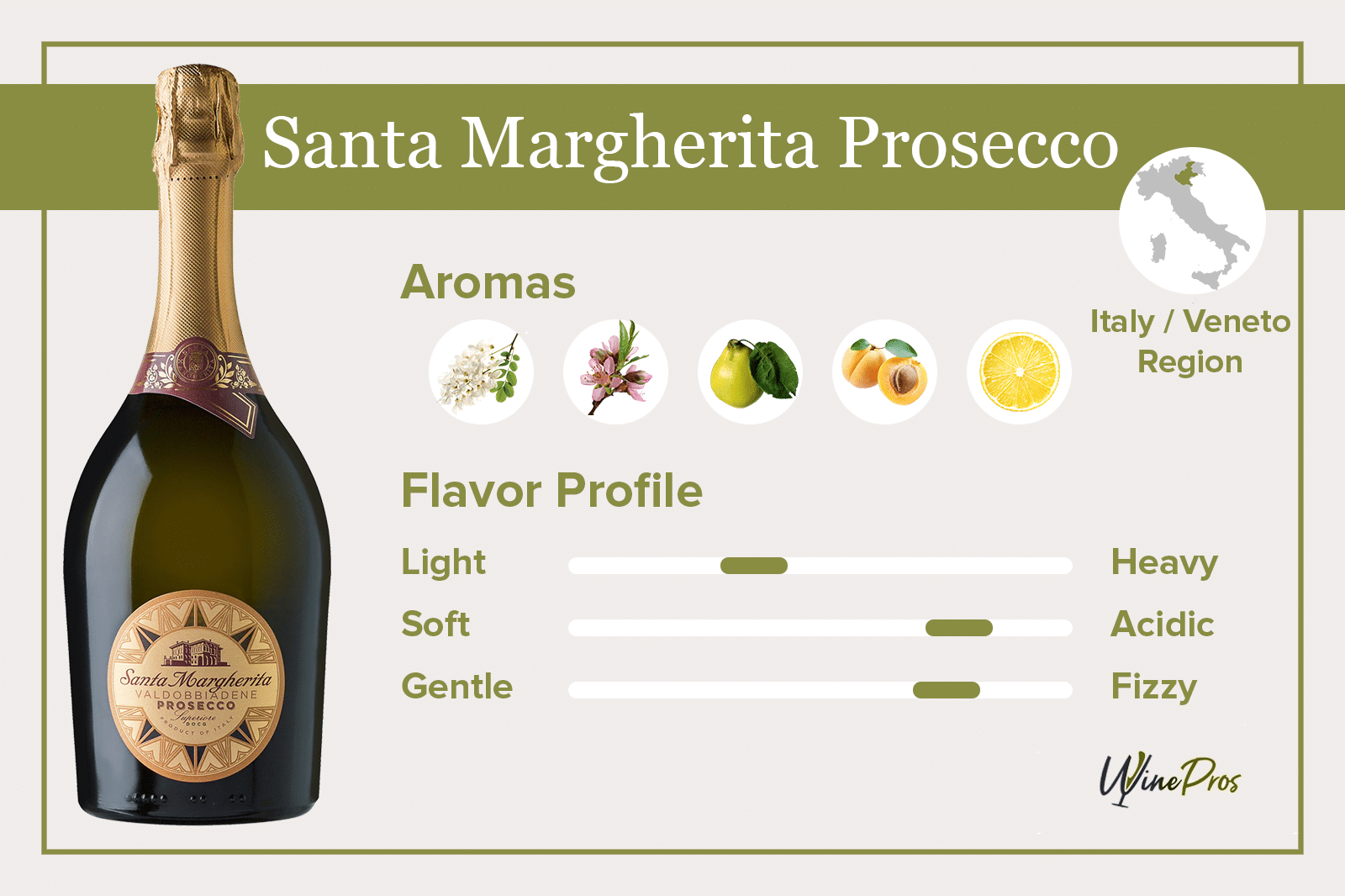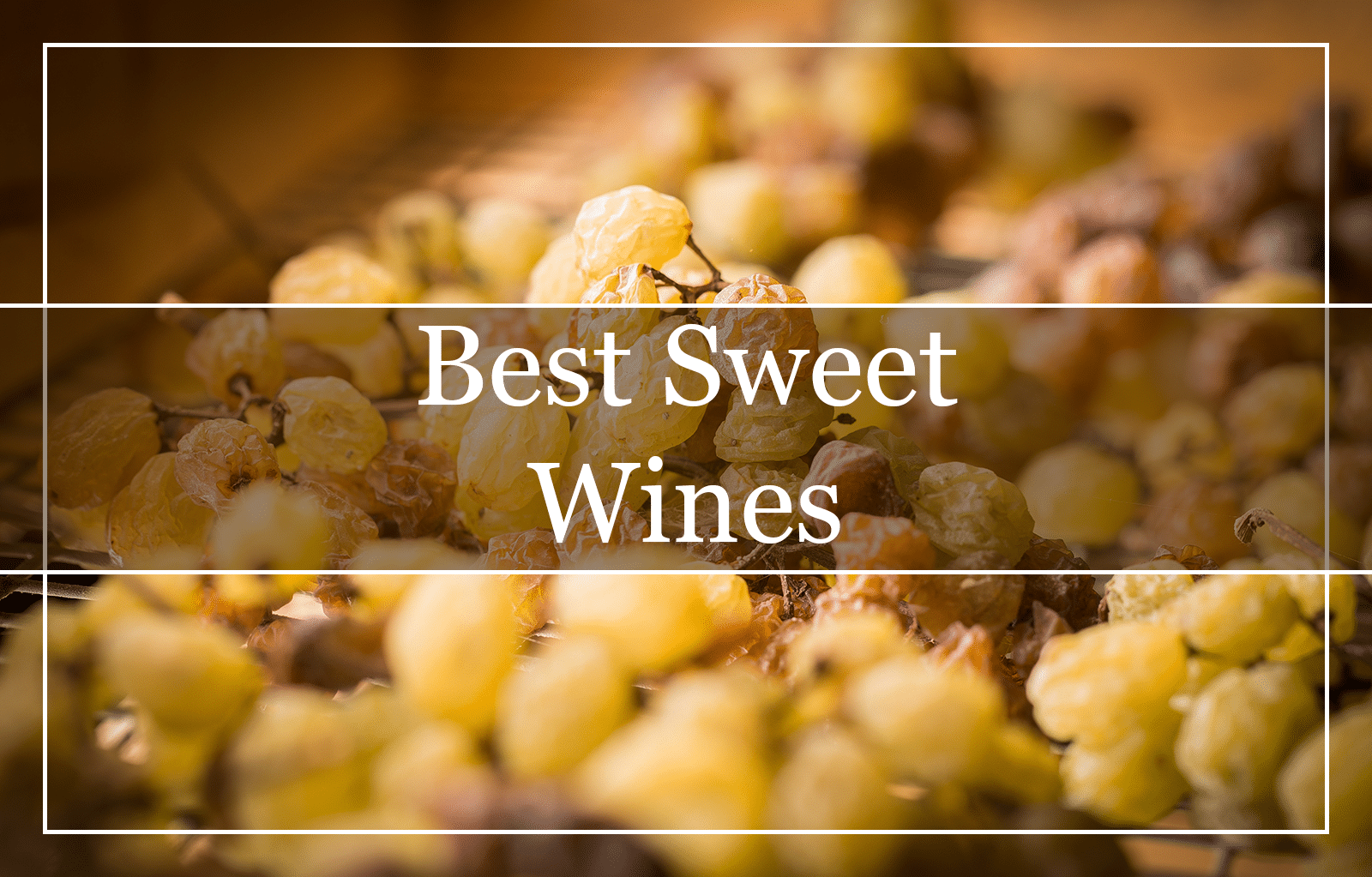What Kind of Wine Is Korbel Sweet Rosé?
Korbel Sweet Rosé is a sparkling wine made from a careful combination of red and white grapes such as Pinot Noir, Cabernet Sauvignon, Gamay, Chenin Blanc, and Zinfandel. If you’re not familiar with Korbel, this winery grows all of the above varieties along with Sangiovese and Syrah in their vineyards. The Korbel Sweet Rosé opens with subtle aromas of melon, green apple, and berries—a fascinating mix. It also has a delicate vanilla flavor and a reasonably tart and oaky finish
The wide variety of grapes used in the Korbel Sweet Rosé blend lends the wine a beautiful pink color. It is almost too pretty to drink! By sparkling wine standards, the Korbel Sweet Rosé has a generous fizz and effervescence, a refreshing citrusy aftertaste, and just a bit of a punch from the acidity. I liked that it wasn’t bone-dry and that it was smooth and not overly buttery.
Korbel Sweet Rosé Review

- Winery — West Coast Winery
- Country/Region — United States, California, Sonoma County
- Type — Californian Sparkling Wine
- Aroma — Raspberry, Vanilla, Berries
- Grapes — Pinot Noir, Sangiovese, Gamay, Chenin Blanc, And Zinfandel
- Taste — Raspberry, Strawberry, Melon, Vanilla, Cotton Candy
- Alcohol Content — 11%
- Sugar — Semi-Sweet
- Pairing — Dark Chocolate, Sausage, Pierogi, Charcuterie
The Korbel Sweet Rosé makes for a fine wine. It is limpid with beautiful red hues and rich flavor. A touch of melon, apple, and wild berries on the nose, with a vanilla aroma and a subtle citrusy aftertaste. It is a very expressive and highly versatile wine, indeed. It’s the star attraction in a range of fruit mimosa such as Apple, Orange, Guava, and Mango. Is it a wonder that Korbel Sweet Rosé won awards at the San Diego International Wine and Spirits Challenge and San Francisco Chronicle Wine Competition? The Korbel Sweet Rosé even featured on forbes.com in an article on Mother’s Day Gift Guide!
Tasting Notes
A fruit-forward wine, the Korbel Sweet Rosé makes for a wonderful dessert accompaniment. Since it is a blend of red and white grapes, the color is not the deep red of a full-bodied red wine, but it is a delightful blush. You will love the wine for its smooth and soft texture, pink hues, and sweet fizzy flavors. It does have a fragrance of cherries, raspberries, and strawberries. Not overly sophisticated, the wine with its refined perlage (bubbles described as pearls) and bright, crisp notes will serve you well especially at large afternoon gatherings.
Appearance
The wine itself is brilliant, reflective, and smooth with entrancing transparency, which is characteristic of all Korbel wines. Small, endlessly refreshing bubbles provide a silky note, while hints of acidity lend energy to the wine. It is an excellent everyday Rosé.
Aroma
The Korbel Sweet Rosé has a distinct yet agreeable aroma of wild berries with a tinge of vanilla. The prominent aromas include cranberry, strawberry, cherry, and raspberry. Perhaps even a hint of pomegranate. In the mouth, the wine has the right balance devoid of an overwhelming tannic attack.
Taste
At first, your palate registers fruitiness and sweetness. Then the alcohol settles nicely on the tongue. It doesn’t burn, and there is no bitterness or dryness. The lively Rosé registers citrus and subtle oak notes and lingers long enough to tempt you to try another sip.
Finish
The Korbel Sweet Rosé makes for a clean and light drink for any occasion. The acidity is not overbearing, and the lingering aftertaste is refreshing. The Korbel Sweet Rosé alcohol content is at 11% which balances its smoothness. The finishing notes are of fruit and oak.
Rating
As a wine lover, I get to taste many wines. That Korbel has made a good product and has impressed me, is beyond doubt. I am sure the other Korbel Sweet Rosé reviews also have the same words of praise. This wine is unique and has many positive points to be discovered in a glass. The Korbel Sweet Rosé has a refreshing new taste, and its fragrance fills your senses. I love the lingering vanilla and raspberry, and just enough fizz to tantalize the taste buds.
Korbel Sweet Rosé Food Pairing
You can sip the Korbel Sweet Rosé at the poolside or beachside. It will not feel out of place in between meals, either. Fried shellfish, appetizers like salads, etc., make a great match with the Korbel Sweet Rosé wine. You can also pair it with light snacks like popcorn, roasted peanuts, chips, etc. Since it’s a fruity wine, it goes exceptionally well with dark chocolate desserts, especially the sumptuous kind with cherries or strawberries.
The Korbel Brand History
A “Czechered” History
It started with the efforts of three Czech brothers, a cigar maker, a metallurgist, and a forger who dreamt of making cigar boxes in San Francisco. A booming business brought forth the need to source timber, and they turned to Sonoma County’s Russian River Valley.
It took a downturn in the building industry for the Korbel brothers to repurpose their land for agriculture. Grapes followed, and soon after, the winery along with a champagne master from Prague, and the rest, they say, is history.
The Prohibition Attack
Though the Korbel brothers started the company, they didn’t survive prohibition. The next generation picked Adolf Heck, a third-generation winemaker, to buy the brand.
Originally from Alsace Loraine, Adolf’s father brought the family to the US and set up a winery. However, prohibition ended that dream. Adolf went on a challenging adventure where he continuously proved himself a success- like re-establishing the Cook’s brand, leading the Swiss Colony into a new era marked with their dominance of the American wine market.
Creation of a Signature Champagne
After studying Enology in Germany, he dreamt of creating his signature champagne that would be less European and, more American. When he bought the Kobel estate, he retained the name but modernized the winemaking and bottling process. It has been the best-selling premium sparkling wine on the market since its inception.
He introduced the California-style champagnes, with more fruit than yeast and hence, more welcomed by the American palate. After Adolf’s death (1984), the company passed to his son Gary Heck, who has been running it since. Aaron, Gary’s son, will be the next in line to run this family-owned, historical brand.
A Wine Brand for All Times and Occasions
And so the promise made to keep the Korbel a family-run business continues into 2021 and beyond. The Korbel brand has received much recognition over the decades, including becoming the twelfth largest wine producer in the US and the serving of Korbel sparkling wines at United States presidential inaugurations.
Frequently Asked Questions
Who Makes Korbel Sweet Rosé?
Korbel California Champagne is a winery located in Guerneville, California. They have been making sparkling wines using traditional methods since 1882. Though wine is their main product, they also make brandy along with still wine and Sherries. By the 1950s, they had expanded, and their vineyards enlarged to meet the demand for the large volume of grapes needed for wine production. The winery and vineyard have survived their fair share of tribulations— from flooding and fires to earthquakes, and yes, even prohibition.
How Is Korbel Sweet Rosé Made?
The main ingredients used in making the Korbel Sweet Rosé champagne are sugar and juice from several grape varieties blended in specific proportions. Korbel uses traditional wine manufacturing methods in which all ingredients are fermented in the storage bottle itself.
After the grapes are harvested, they are sent to be crushed. Crushed grapes are then passed through presses to make sure all the juice is extracted. The grape juice is then left to settle for a short while (hence the light hues) before transferring to large stainless steel containers. This is where the first fermentation begins. It is stored here with temperatures maintained between 59-65 degrees Fahrenheit.
Where Is Korbel Sweet Rosé Made?
The Korbel Sweet Rosé is made from the finest red and white grapes from the Korbel vineyards. The Korbel Champagne Cellars winery is located in Guerneville, CA, spread across 2000-acres. Korbel arranges wine tastings, winery visits, and garden tours for visitors. If you require more details, please visit their website.
How to Serve Korbel Sweet Rosé?
The Korbel Sweet Rosé should be chilled before served. You can use rose, cabernet, sparkling, champagne, or regular white wine glasses. Each bottle holds enough wine for about six servings. After you pour your wine, make sure to seal the bottle to preserve the fizz. If kept in an ice bucket, it will maintain the perfect temperature for the next few hours.
How Much Does Korbel Sweet Rosé Cost?
This is a premium quality sparkling wine. So the Korbel Sweet Rosé price will differ with every location and the seller. The price, however, has remained stable at between $12-$16 per 750ml bottle.
How Long Does Korbel Sweet Rosé Last?
The Korbel Sweet Rosé should be consumed within 24 months from bottling. However, it tastes best within the first year. It has to be stored upright and in a cool, dry place. It has to be protected from direct heat and light to ensure that it remains fresh and flavors are retained.
How Many Calories Does Korbel Sweet Rosé Have?
At 8g of sugar for every 5oz of wine, the Korbel Sweet Rosé has 120 calories per 5oz serving. The carbohydrate content is 8g, while fat and protein is 0 gm. Those worried about Korbel Sweet Rosé calories can consume smaller quantities.
Conclusion
The Korbel Sweet Rosé makes for a fine wine. It is limpid with beautiful red hues and rich flavor. A touch of melon, apple, and wild berries on the nose, with a vanilla aroma and a subtle citrusy aftertaste. It is a very expressive and highly versatile wine, indeed. It’s the star attraction in a range of fruit mimosa such as Apple, Orange, Guava, and Mango. Is it a wonder that Korbel Sweet Rosé won awards at the San Diego International Wine and Spirits Challenge and San Francisco Chronicle Wine Competition? The Korbel Sweet Rosé even featured on forbes.com in an article on Mother’s Day Gift Guide!

